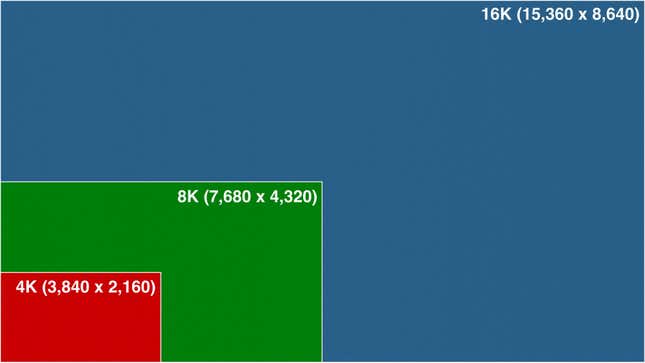The 16K TV boasts a resolution of 15,360 x 8,640 (which amounts to 132,710,400 pixels in total), a contrast ratio of 1200:1, a 99% DCI-P3 color gamut, and a refresh rate that tops out at 60Hz (because you need some serious processing power to go any higher than that on a display like this).
Advertisement
Advertisement

If you’re having trouble visualizing just how many pixels 16K really is, here’s a handy graphic we whipped up. A 16K TV has four times as many pixels as an 8K TV, and 16 times as many pixels as the 4K screen you’re probably currently using at home. At this point, HDTV, which was a huge leap in resolution for TVs when it debuted decades ago, almost feels as ancient as the standard definition tube TV collecting dust in your parents’ basement.
Teoh also took the opportunity to capture some video of BOE’s 16K TV, which was actually displaying 8K content that had been artificially upscaled to 16K using AI. This highlights one of the problems that even 8K TVs are still currently facing: native content at those extreme resolutions isn’t easy to come by. But our favorite feature of the 110-inch TV is that you’ll find two pairs of handles on the back, making the screen easier to carry around and minimizing the risk of an accidental drop. There’s no word on what this beast will cost, but dropping it while trying to mount it to a wall will probably be as costly as totaling a sports car as you pull out of the dealer’s lot.
Services Marketplace – Listings, Bookings & Reviews